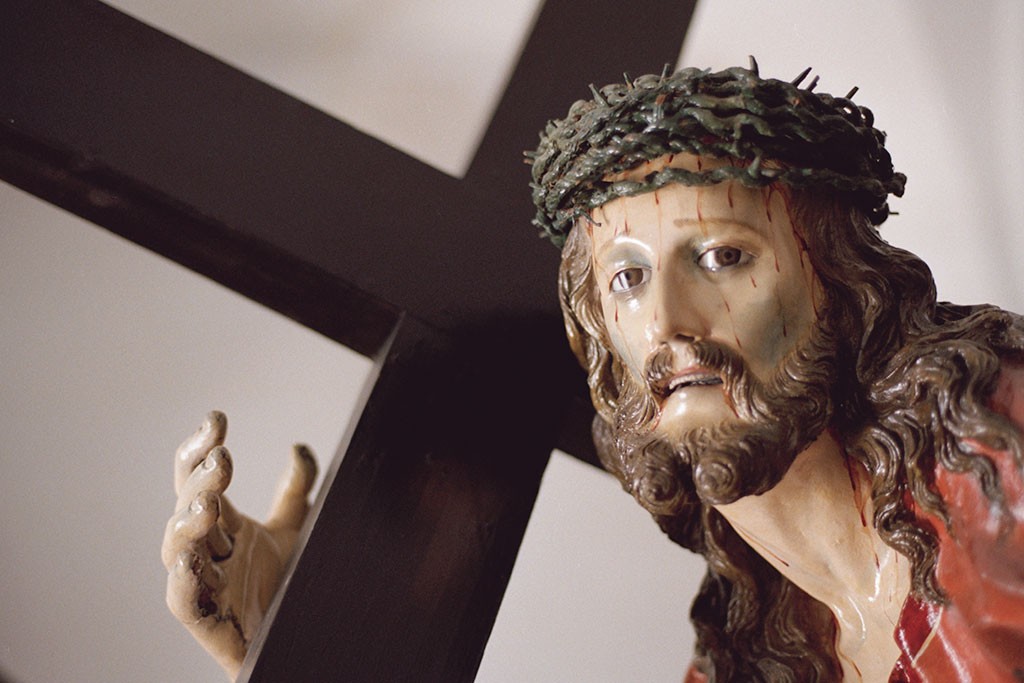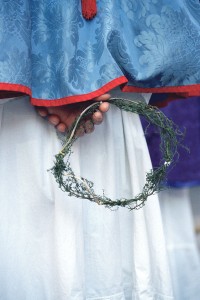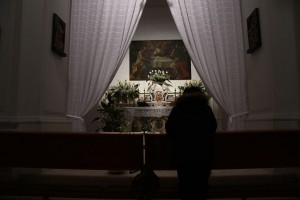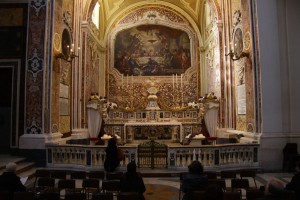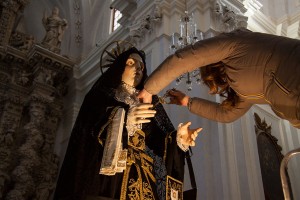Visiting the sepulchres
Like many other Puglian towns, Monopoli offers its visitors moments and rituals linked to the Holy Week, starting with Palm Sunday and continuing with the rituals of Maundy Thursday. After the evening mass, called Coena Domini, where the ritual of washing feet demonstrates a renewed commitment to live in humility and in the service of others, it is possible to visit the sepulchres (more correctly “altars of repositions”) in the different churches, where they are impressively complimented with accurate flower decorations. Locals honour the tradition by visiting the churches and their altars in odd numbers only.
Festivals and food
The term “sepolcro” is used in Puglia as well as in other regions of the south and indicates the space for the holy hosts of the “Coena Domini” Mass. On Maundy Thursday, the residents prepare the traditional “focaccia con spunzèle” (foccacia with spring onions), which can be smelt coming out of the houses and which will then be eaten the next day, Good Friday. In the past, in order to give further meaning to sepulchres, people let wheat and legumes germinate in little dishes symbolising the union with the gardens of Adonis, reminding us of the link between Christian rituals and farming traditions, interwoven with residuals of paganism. On Maundy Thursday, all churches used to remain open during the night and some devotees stayed up in vigil until the early hours of the morning until the “pepùnne” came, a group of hooded Brethren wearing a crown of thorns who wandered from one sepulchre to another as an act of penitence and atonement. Simple devotees joined them to share in that particular moment in religious silence which was interrupted only by the sound of the monks’ songs.
The procession of Good Friday
The procession of the “sorrowful mysteries” represents the most intimate and immersive religious ceremony of the Holy Week. On this occasion, the confraternities are united by the commitment of reflecting on the key event of the Christian message, the Crucifixion, strictly linked to Christ’s resurrection. It’s a procession similar to the “trènele” (a wooden instrument), songs are played by the town band and crowns of thorns are worn by the monks.
The traditional procession, called procession of the mysteries which reminds us of the distressing moments of Christ’s suffering, is held by the seventeenth-century confraternity of the “Crocifisso delle acque”, generally called the confraternity of St Francesco, custodian of the five statues made of papier-mâché by craftsmen from Lecce. Together with the statue of the Lady of sorrows, venerated by the confraternity called “del Purgatorio” by the homonymous church, there are also the figures of Christ – similar to those of other southern Italian cities – characterised by particular facial features expressing the suffering of Jesus. In Largo Plebiscito, a multitude of believers is ready to see the procession: the statues come out of the church of San Francesco d’Assisi brought on the shoulders of the monks. The main statue of the procession is “Cristo crocifisso” (Christ crucified), evocating the tribulation of the sorrowful Mother, is carried with great care and composure by the monks, leaving the church on her son’s trail.
The statue of the sorrowful Mother is dressed all in black with a few golden threads and a high collar made from lace (a dress clearly inspired by Spanish culture). In her hands, there is a white tissue and a little sword piercing her heart, elements which strengthen the sense of sorrow.
